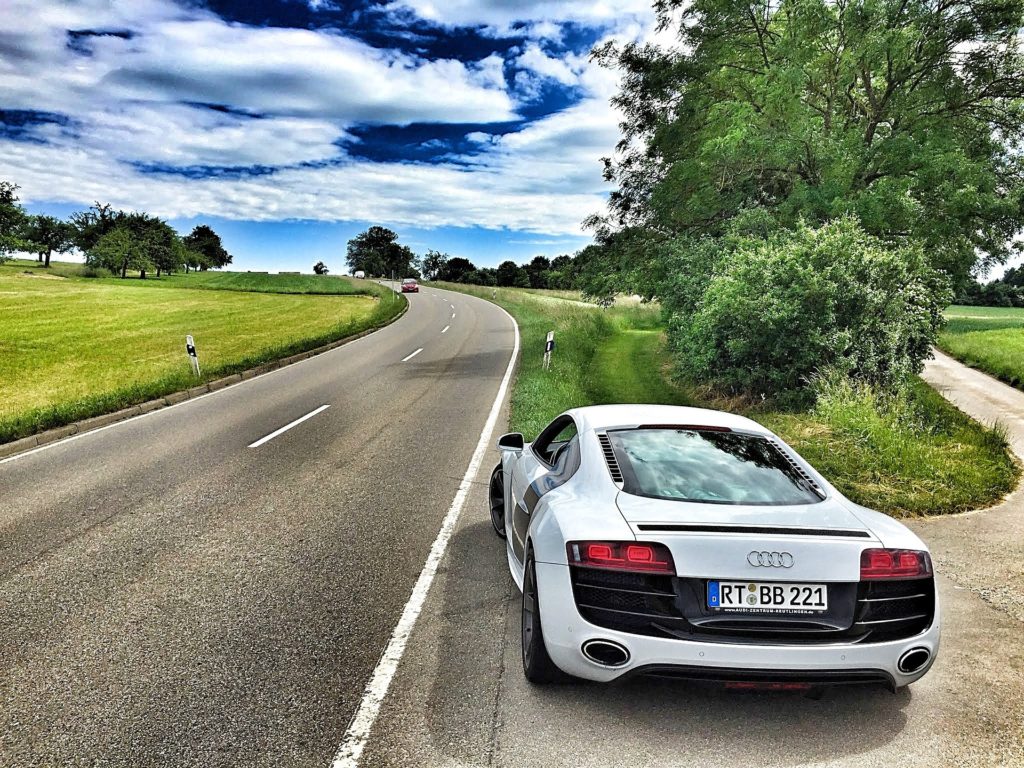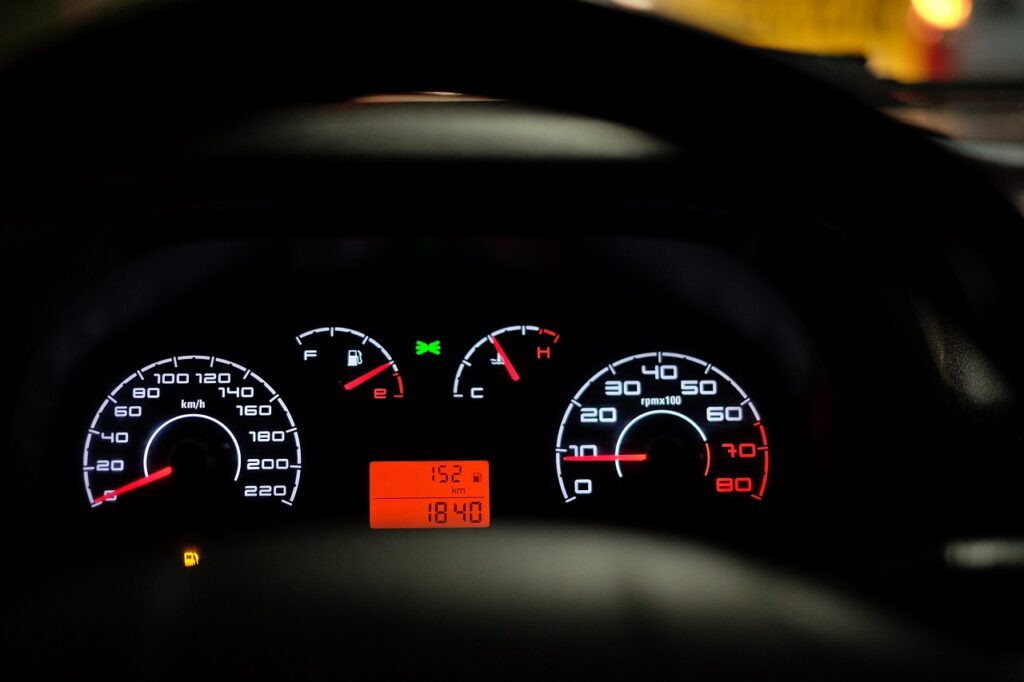Last week was NVIDIA’s GTC. GTC, or the GPU Technology Conference, made a hard pivot this year to AI, and their Autonomous Car section was particularly robust. One of the most exciting car talks was by Hildegard Wortmann, a member of Audi’s management board. My wife and I have been fans of Audi for years, and we’ve owned two TTs, one S5 Cabriolet, and one of the few A3 with a six-cylinder engine in it (which I regret not keeping as a track car). Audi seems to do the best job creating a balanced vehicle; this Car & Driver comparison review had the Audi SR7 last in performance but first in choice is an example. The Audi was slightly slower than the BMW and Mercedes AMG, but it was enough more comfortable to catch the checkered flag. It seems, like most of us, the Car & Driver folks, didn’t appreciate cars that beat the crap out of you when driven.
But three things struck me from Hildegard’s presentation. One, cars will go through unprecedented changes over the next five years; by the end of 2030, true self-driving will have arrived, and selling a used car built before 2025 after 2025 is going to be increasingly difficult.
Let’s take each in turn.
Unprecedented Changes
The VW group, which includes Audi, is getting aggressive with electric cars and autonomous driving. They aren’t the only ones, and their timeline seems to be in line with what other major car companies are doing regarding a colossal pivot to electric cars that are also capable of driving themselves.
The VW group has formed a new entity called Cariad which will become the second-largest software company in Europe to make automotive software. They are also changing how they design cars. Where historically they designed from the outside in, they will shift to designing from the inside out. Also, they’ll be designing their cars far more holistically, which is a requirement for both electric cars where the batteries need to be far more integrated than gas tanks needed to be, and autonomous cars where you have to assure optimal placement of the sensors for them to work correctly.
The result will be safer and more reliable cars provided at increasingly attractive prices as this approach’s efficiencies take hold. Hildegard showcased thee wildly different prototypes. The AI:CON solution is a long-distance sedan with no user controls. It is designed like a rolling living room with a focus on entertainment. The AI:RACE is almost the polar opposite. It is designed to be driven on a track if possible, and its unique feature is a driver’s seat that can reposition itself in the middle of the car, so it is ideally sorted for racing. The AI:ME is a blended road vehicle where the steering wheel in the instrument cluster retracts when not needed and automatically adjusts to user preferences. Finally, and my favorite is the AI:TRAIL, which was the coolest looking. This off-road SUV-like design comes with five flying drones which can light the way or look ahead for obstacles keeping the driver and car safer off-road.
Finally, they’ve changed the company’s structure so that groups are no longer organized by brand but by propulsion systems.
2030 Self-Driving Becomes Real
By 2030, according to Hildegard, we’ll be connecting to a digital device every 18 seconds, and one of those digital devices will be a self-driving car. These cars will do more than drive for you as well. They will learn about your unique preferences and act on that information. They should have conversational AI capability, which means you can talk to them and potentially have them talk back. They will be fully connected to the infrastructure and cars around them. They will generate 25 Gigabytes of data every hour to generate 3 Terabytes per day once they are mature.
Regulatory and societal issues, not technology, are creating friction in this space, according to Hildegard. But that will get resolved over the next decade as this capability moves ever closer to market. During this time, the car will evolve from a transportation focus to a living space focus, and car interiors will reflect this evolving into more like mobile sitting rooms.
Given this focus on in-car luxury and entertainment coupled to the autonomous driving roll out the ability to work, play, or learn while the car is transporting, the driving experience will change dramatically. Depending on the car type, you may not even have the option of driving yourself. The increasing liability for human-caused accidents will likely make driving yourself far less attractive, at least in traffic, than it is now.
ICE Cars Will Increasingly Be Hard to Get Rid of This Decade
Between 2025 and 2030, the demand for electric cars will increase substantially, while the demand for internal combustion engine (ICE) cars should decline simultaneously. This transition means that both ICE cars and electrics brought to market before 2025 as this electric pivot becomes pronounced will be increasingly hard to sell because they’ll lack the electrical capability that the market is expected to favor by that time. Those who take the biggest bath will buy high-end ICE cars between 2033 and this full pivot because these cars are likely to lose most of their resale value.
This series of events suggest holding on to your car at least until the new smarter electric cars show up in 2025, and you may want to consider leasing over buying for your next car, so the leasing company takes the car disposal risk. This problem isn’t just ICE cars either because electric cars will get a considerable range and technology jump, making them even harder to resell.
And with robotaxis coming to market during this period, many people may decide they don’t need cars anymore, further reducing the car resale market.
Wrapping Up
We are moving into a period of extreme automotive disruption. Cars will be changing more than they have ever changed before this decade, and we’ll likely increasingly question whether we even need to own one. Given we estimate that most people only use their cars 4% of the time, the economic incentive to move away from car ownership will be exceedingly strong. If we buy a car, it will look different; it may not even be drivable, it will be increasingly likely you won’t ever want to own a car instead of subscribing to a robotaxi service by 2030.
In short, over the next ten years, every part of the car industry is likely to change from how cars are designed and built, to what power plant they use, to who or what drives them, to who or what owns them, to whether they are more car or more roaming living room.
Selling used ICE cars will get much harder, driving cars that don’t have autonomous technology will be both more expensive (insurance) and more dangerous, and even by 2030, we still will be in the first phase of this transition.
The most attractive cars are likely those that can be upgraded over time, and these will also be the most sustainable offerings because they’ll be less likely to be scrapped. Finally, Cars-as-a-Service should emerge as one of the predominant ways we get our transportation after 2030. That is a ton of change in a short time. If you don’t like change, you are in the wrong decade.
- The Mighty Mini: Why HP’s Z2 Mini G1a Workstation Is the Unsung Hero of AI Development - July 7, 2025
- The HP OmniBook X Flip 2-in-1 16-Inch: Your New Digital Swiss Army Knife (Now in Glorious Atmospheric Blue) - June 25, 2025
- The Open AI Avalanche: Why AMD’s Collaborative Spirit Is Outmaneuvering NVIDIA’s Empire - June 22, 2025



